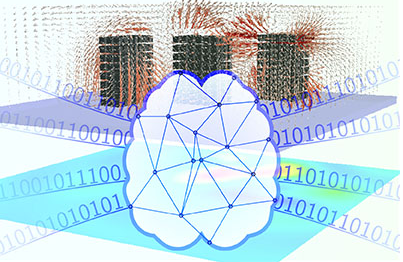A new AI neural network developed by researchers at the University of Southampton is helping them understand the unique 3D flow of light around nanoparticles. The aim of the research is to establish a technique that could allow designers to produce optical instruments that could influence and control the movement of light.
Using the data the AI generates, the scientists hope to then be able to model nanoparticles with the capability of light manipulation. This is an exciting development for the field of nanophotonics as it also allows the researchers to understand the different behavior of light interaction between nanostructures when compared to larger structures and media.

Image Credit: University of Southampton
The Behavior of Light
Pertaining to the behavior of light on the nanoscale, nanophotonics explores the interaction between light and matter. Scientists and researchers in this field then explore new ways in altering this relationship to generate new possibilities and try to find future applications in fields as varied as biochemistry and electrical engineering.
Useful applications can apply to devices and instruments such as solar cells and microscopes where optimizing the use of light is vital to the core function of the device. For experts working in nanophotonics, the emerging discoveries will see nanophotonics inside solutions in sensor technology, telecommunications, and data-processing.
Maxwell’s equations of electromagnetism are useful for considering the flow of light around nanoparticles and a nanostructure can be calculated. Yet, translating the theory into practice, is where the challenge begins. Making calculations can be extremely time consuming meaning the processes of designing and optimizing relevant structures can take days due to the level of complexity involved.
Publishing their findings in the journal, Nano Letters, Peter Wiecha and Otto Muskens describe the strengths and limitations of using artificial intelligence through a number of model studies of single particles and their near-field interactions. The pair believe their approach, “paves the way for fast, yet universal, methods for design and analysis of nanophotonic systems.”
Optimizing AI
AI has proven itself to be a useful and dynamic mechanism when attempting to overcome the issues and limitations researchers encounter in optimization. By feeding a neural network the foundational rules for a system it is able to learn how to perform a series of tasks and then develop the capability to self-initiate new sequences. Yet, one of the drawbacks is that the fact remains, AI can only do this in relation to very specific situations based on the information it is given.
However, the innovation in the latest approach Wiecha and Muskens have based their methodology on is based on “convolutional” networks which is a popular neural network in image analysis. Thus, the pair have developed a network that can track and predict the flow of light not just on uniformed shapes but also adapt to arbitrary more complex nanoparticles without having to be fed constant streams of information from an external source.
Wiecha and Muskens state that not only can their research provide a boost to nanophotonics but also be applied in other areas such as inverse design – a system is then able to design nanostructures based on specific optical requirements. So, as well as being able to track and analyze the neural network is able to assist in the design for the light manipulation process.
Next Steps
Emboldened to continue on their current path, the pair of researchers now want to finetune their system so they can improve performance elements. Enhancing the speed the neural network can process the data will allow them to move onto developing other analysis techniques, including real time tracking of nanophotonic devices and arbitrary illumination analysis.
By increasing the range and capabilities of the neural network, the pair hope to boost progress and enable powerful, groundbreaking physics experiments. This could pave the way for some serious advances in the evolution of optical computer chips as well as creating antennae and surfaces that can control the movement and concentration of light.
Disclaimer: The views expressed here are those of the author expressed in their private capacity and do not necessarily represent the views of AZoM.com Limited T/A AZoNetwork the owner and operator of this website. This disclaimer forms part of the Terms and conditions of use of this website.